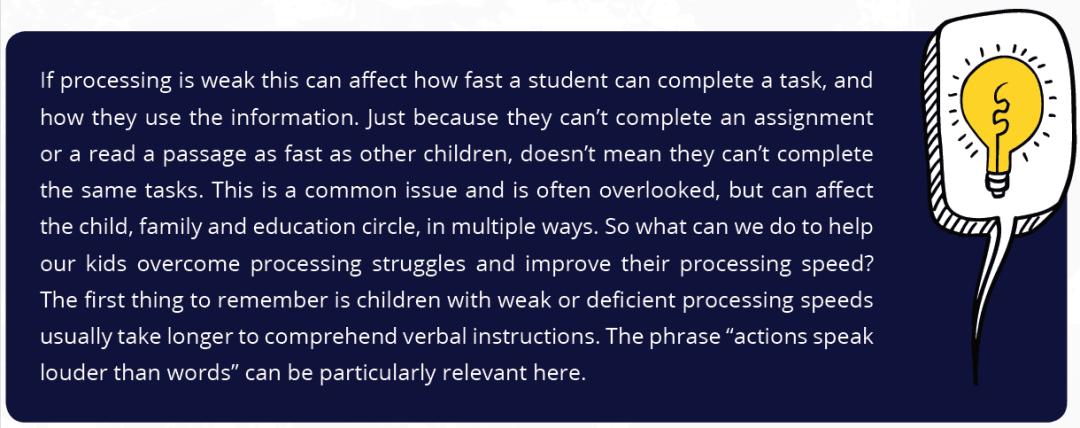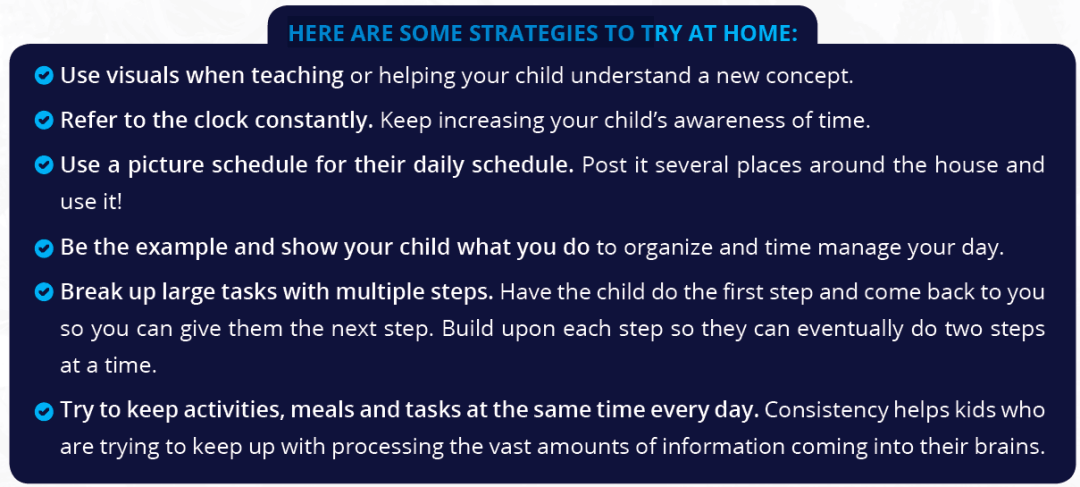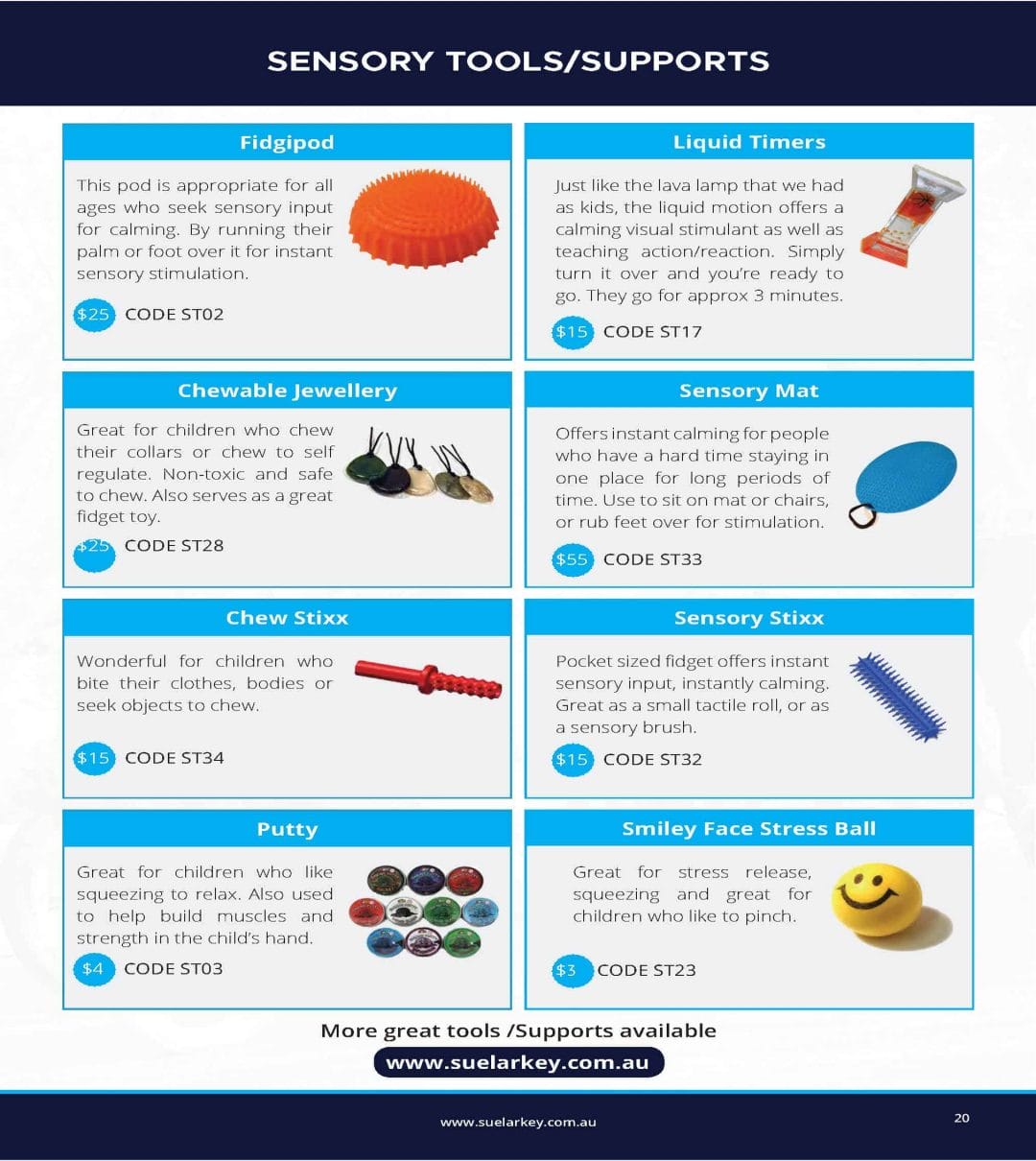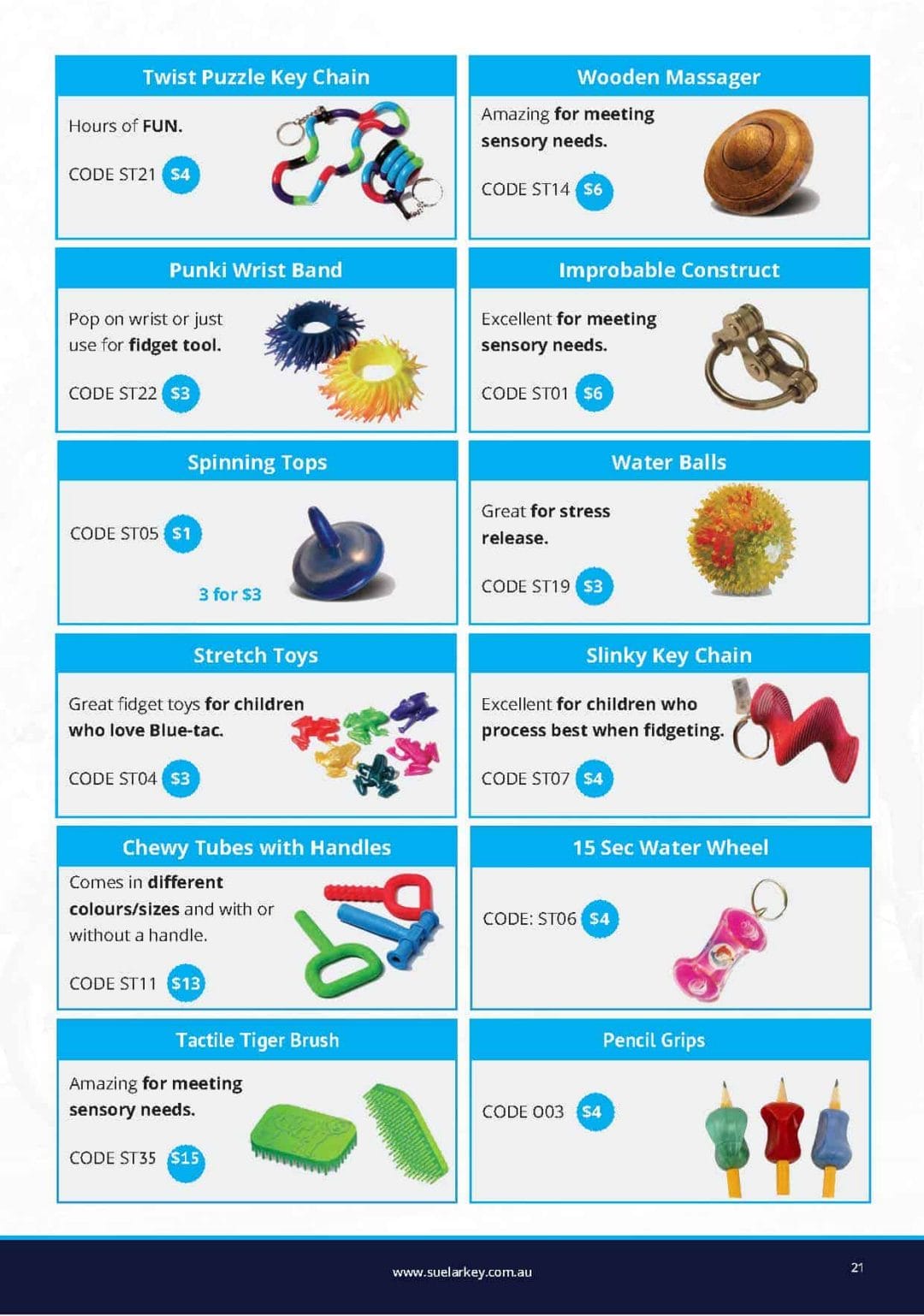Slow Processing Speed
This child might have slow processing speed. This means they may have difficulty remembering instructions in the classroom or retaining important details for an assignment or exam. These children are often labelled “dumb” or “lazy” when they are often very intelligent, but don’t process information as quickly as their classmates. This can lead to anxiety as it impacts on their ability to engage in learning. So it is important to put in place accommodations so they don’t feel like they are struggling. Understanding the link between anxiety and slow processing speed helps you to best support the child and for the child to know why they may take longer than their peers.

Processing speed is like a muscle and becomes stronger with repetition. Memory experiments can bea fun and enjoyable way to increase processing speed!
Classroom Modifications To Help
Students with Slow Processing Speed
TEACHING IDEAS
- Regularly check-in with the student to ensure they understand the instructions given.
- Reduce the number of assignments or problems the student has to do.
- Write down instructions for tasks.
- Email parents or students class notes.
- Provide a safe area (email or phone) for student to ask follow-up questions on assignments of class work.
- Show your student an example of ‘good notes’ to help learn to identify the key aspects of note taking.
VISUAL SCHEDULE
- Try incorporating visual instructions into daily routine.
- Hang up schedule everywhere that would be useful. Include all steps and tasks required.
- Try using actions instead of verbal instructions.
- A Timer is a great visual tool which can increase the student’s awareness of time. This can be very helpful for practicing the executive function of time management.
- Use pictures, graphs and charts to explain what is being taught in class.
CLASSROOM TIPS
- Allow the student additional time for exams, homework and assignments.
- Encourage the student to answer questions in class and give them extra time to respond.
- Allow another student to take notes if your student has trouble listening and taking notes at the same time.
- Speak slowly when giving instructions and repeat directions when necessary.
SHORT AND SIMPLE DIRECTIONS
- Although it is best to use visuals, you will have to give verbal tasks to your student.
- Make sure you keep the instructions as short, simple steps. If this is successful, over time, gradually increase complexity.
- Modify your list of steps to allow the student time to process, and plan what to do next.
- Let your student watch as you organise for the next day and let them do the same.
ORGANISATION
- Give the student examples of what other students have done in the past as a guide.
- Colour code assignments, homework and projects to help the student know how to prioritise.
- Break up assignments and homework into smaller, more manageable tasks.
- Extend deadlines for student to complete homework.
- Stick to a daily routine, provide visual charts for student to complete, so they stay on task for the whole day.
ASSIGNMENT AND TEST TAKING
- Allow the student to take verbal exams and explain their answers to you.
- Provide a quiet space for the student to take exams. This will be a less distracting environment and allow them greater time to process questions.
- Shorten length of tests and assignments.
- Accept unfinished tests and assignments and allow the student time to finish problems they missed or didn’t have time to do.
- Give the student opportunities to discuss their knowledge of the subject instead of formal exams.






 For all orders outside Australia please email
For all orders outside Australia please email 